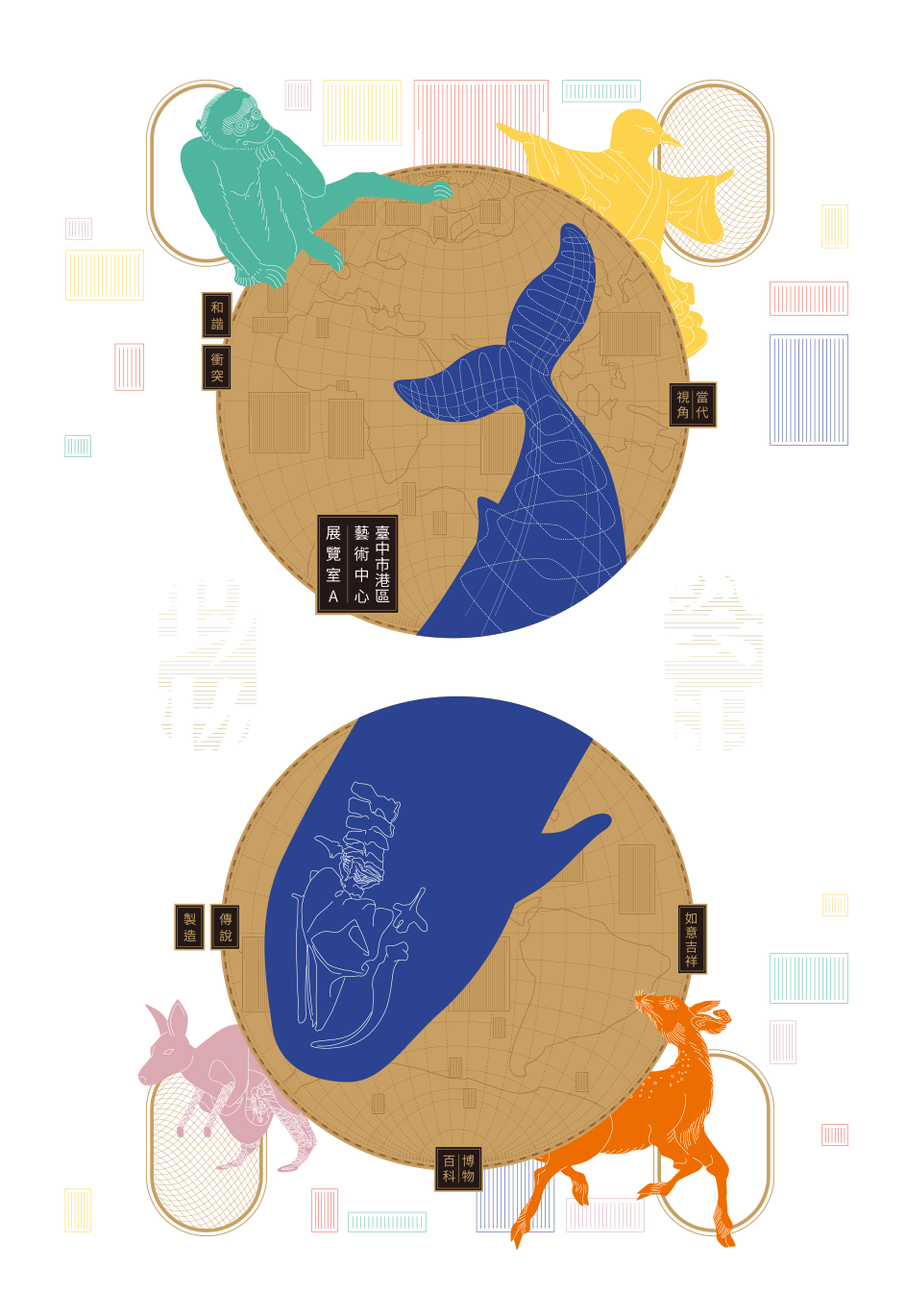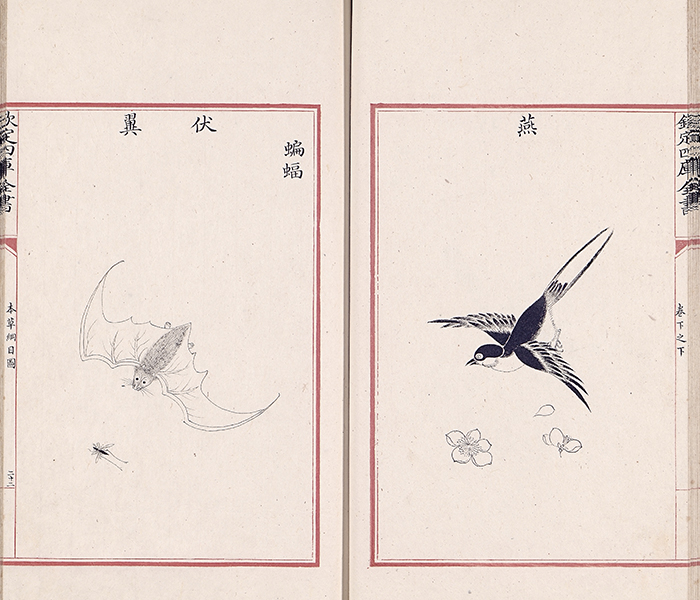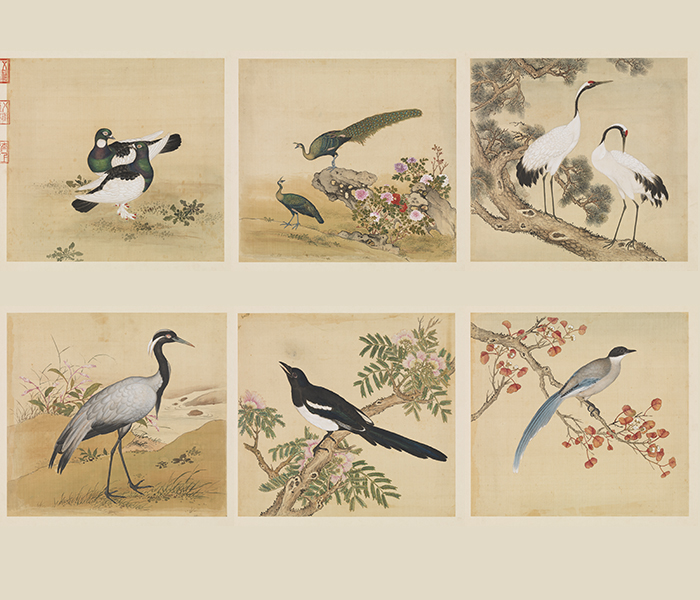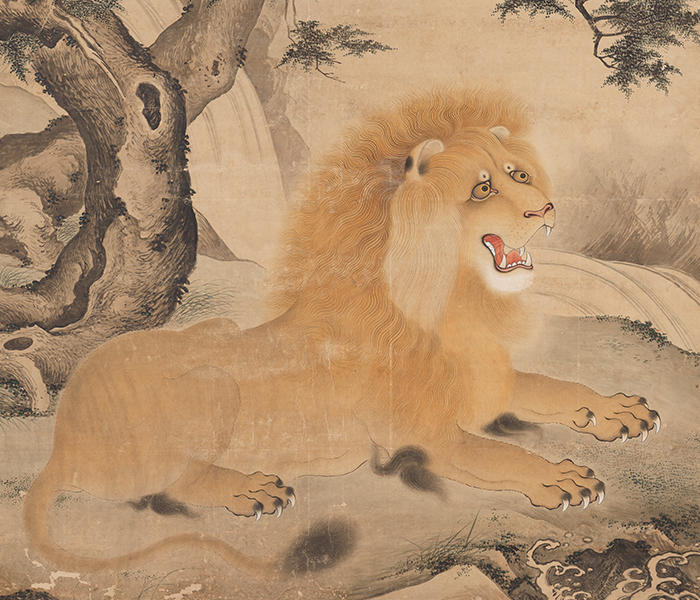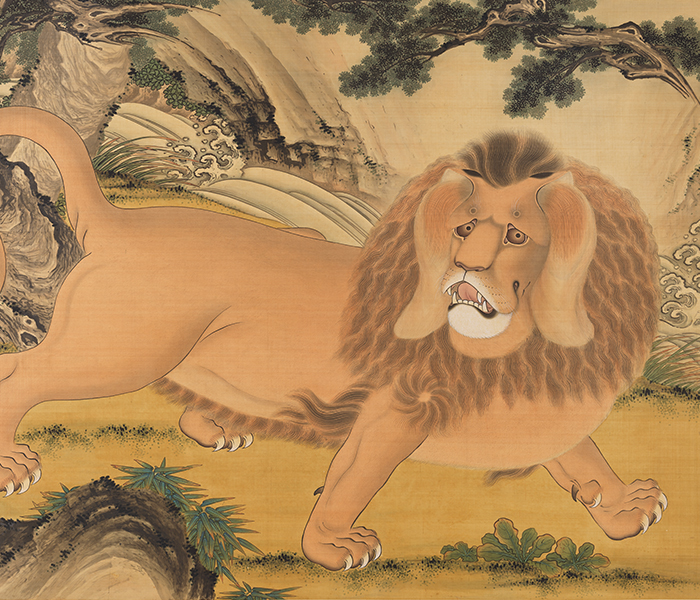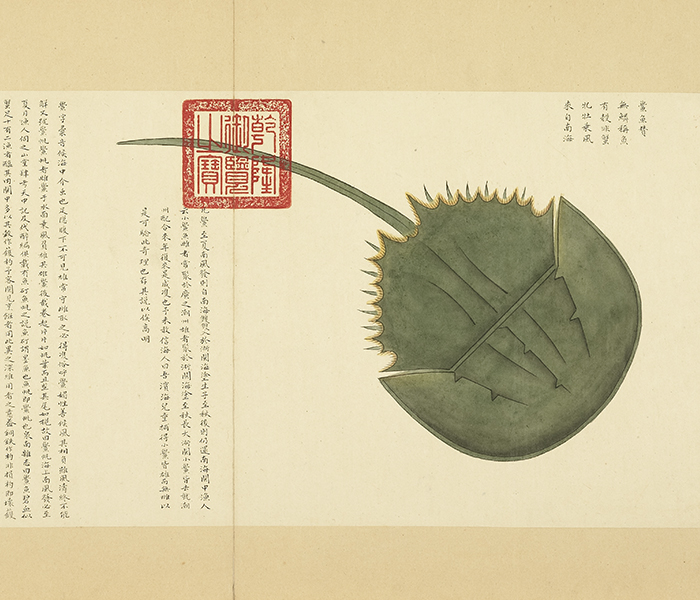
The Universal World of Ferdinand Verbiest
- National Palace Museum
- 2018
- Artefact Inspiration: The Universal Map of the World (Kunyu Quantu )& the Illustrated Explanation of the World, developed by Ferdinand Verbiest, Qing dynasty (1644-1911)
The Universal World of Ferdinand Verbiest is a novel media installation that was inspired by the Universal Map of the World (Kunyu Quantu) and the Illustrated Explanation of the World, both by Ferdinand Verbiest, in the National Palace Museum collections. The installation has adopted a special map projection method that transforms the Universal Map of the World into an actual globe, which is then combined with three-dimensional augmented reality technology to link the real sphere and virtual map world via mobile devices. Approximately four hundred years ago, Ferdinand Verbiest made use of hand-drawn maps to assist the Emperor Kangxi in understanding the structure of the world. Now, making use of augmented reality, we seek to reproduce the same enlightening experience.

Morphosis of Castiglione's Hundred Horses
- City University of Hong Kong
- 2016
- Artefact Inspiration: One Hundred Horses, Giuseppe Castiglione, Qing dynasty (1644-1911)
Guiseppe Castiglione's One Hundred Horses (1728) silk handscroll portrays 100 horses in a variety of coat colors and with distinctive markings. This installation provides a digital animation of these equine coat textures, and projection maps them onto a white life-size horse sculpture, thereby creating the visual illusion of a morphosis across all the horses in Castglione's painting.
Compendium of Materia Medica
- Ming dynasty (1368-1644), Li Shizhen
- From the Compendium of Materia Medica in the Wenyuange Edition of the Complete Library in Four Sections (Siku Quanshu) of the Reign of Qianlong (1736-1795), Volume: Third Section of the Second Illustration Volume
- 22.4cm (H) x 15.4cm (W)
- Facsimile
The Compendium of Materia Medica was a grand work of pharmacy compiled by Li Shizhen of the Ming dynasty, and represents a collation of all existing knowledge on herbology prior to the 16th century and the actual observations and experiences of the author. Organized into sixteen divisions and sixty orders, the work employed a novel classification system for flora and fauna, and further utilized differentiation techniques and evidence-based methods to ascertain the names and types of the medicines included. The Compendium of Materia Medica has been copied and republished several times, and the version displayed in this exhibition was derived from the Medicine Subcategory of the Zi (Masters) Section in the Complete Library in Four Sections (Siku Quanshu) compiled in the reign of Qianlong during the Qing era. This exhibition has specially selected illustrations of several animal parts that are still used in traditional Chinese medicine, including parts derived from current endangered species, such as tiger bone and rhinoceros horn, in order to highlight the evolving relationship between humans and animals across different times and eras.
Manual of Birds
- Anonymous, Qing dynasty (1644-1911)
- Album leaf, ink and colors on silk, 41.1cm (H) x 44.1cm (W)
- Facsimile
Manual of Birds is comprised of twelve albums with 30 leaves each, totaling 360 works. On the right of each folding leaf is a depiction in fine-line brushwork and Western painting methods for a different kind of bird, some of which are mythical. On the left is a text written in Chinese and Manchu with the name of the bird, its habits, and environs, making it similar to a modern illustrated compendium of birds. This album employs the compositional forms and artistic methods of bird-and-flower painting to record the features and habitats of birds. The illustrated leaves, moreover, can be regarded as individual works of art. The unique ideas and contents in this album make it a rarity in the history of Chinese bird-and-flower painting, bestowing upon it exceptional artistic value.
The Lion
- Ming dynasty (1368-1644), Anonymous
- Hanging scroll, ink and colors on paper, 317 cm (H) x 213 cm (W)
- Facsimile
The Chinese term "suanni" derives from an Indian language group or Sanskrit. Also, in the Western Jin, the annotation by Guo Pu (276-324) to Erya indicates that "suanni" is actually another word for a lion that made its way into China from western regions. This painting depicts a bank with a waterfall behind as a male lion sits with a full mane and mouth agape staring fiercely outwards. Sitting under trees with chest upright, it is full of regal manner. The painter used repeated texture strokes to outline the coarse veins of the tree forms, to which shading to make them stand out and express quantity and quality. This work was done in the middle to late Ming dynasty, being closely related to the court style.
The Lion
- Qing dynasty (1644-1911), Liu Chiu-Te
- Hanging scroll, ink and colors on paper, 145cm (H) x 197cm (W)
- Facsimile
The term "suanni" is a phonetic translation imported from an Indo-European language or Sanskrit. Suanni (Ni) and lion (shi) are actually two terms for the same animal, the concept of which was transmitted into China from the West. Liu Chiu-Te, style name Yang-Sheng, was a native of Shuntian (present-day Beijing), and was known in his time as an excellent painter of portraits. Following his commission to paint the portrait of the Emperor Kangxi (1654-1722), he was granted the rank of Zhongshu (Palace Secretary). This work depicts a large, strongly-built lion standing on the banks of a stream. The lion has an aura of stern majesty that almost fills the entire painting. The artist used detailed brushstrokes for the lion, taking particular care over its mane and fur, and this provides a pleasing aesthetic contrast with the looser brushstrokes used for the background.
Illustrated Album of Sea Miscellany
- Qing dynasty (1644-1911), Nie Huang
- Album leaf, ink and colors on paper, 30.4cm (H) x 68cm (W)
- Facsimile
llustrated Album of Sea Miscellany has four albums and the fourth album is in the National Palace Museum. This album depicts such marine life as horseshoe crabs, snails, crabs and shrimp. With no seal or signature of the artist, each painting has a title and explanation of praise in regular script.
The preface to the first album states that in the summer of 1698, Nie Huang travelled to Fujian and visited coastal areas. Nie, a native of Qiantang (modern Hangzhou, Zhejiang), travelled all over the land for nearly 20 years. He later gathered illustrations of the many sea creatures he had seen and heard of in Illustrated Album of Sea Miscellany.

Marvels within the Sea – Immersive and Interactive Theater
- National Palace Museum
- 240cm (H) x 650cm (W) x 650cm (D)
- Artefact inspiration: Illustrated Album of Sea
Miscellany, Nie Huang, Qing dynasty
Marvels Within the Sea – Immersive and Interactive Theater invites audiences to adopt a novel reclining perspective, and participate in interactive theater using fishing lights. The experience is akin to that of being immersed in the ocean, enveloped by the capricious and changing vistas of the deep, the rhythmic rise and fall of the waves, and the surround sound effects of the deep sea. Developed upon the concepts of collective co-creation, sensory feedback, aesthetic experience, and open participation, this interactive exhibit aims to allow audiences to involve themselves in a deeply immersive experience of the boundless ocean deep. The content of this exhibit was inspired by the work, Rich and Varied Products of the Sea, which was created by the Qing era biologist and artist, Nie Huang. Marvels Within the Sea – Immersive and Interactive Theater presents the myriad of stories collected from far and wide by the artist Nie Huang, as well as his museological perspective towards the natural world, and has thereby woven together a fantastic marine world entwining both imagination and reality.

Animal Europe - Comic Physiology of Europe (L'Europe Animale - Physiologie Comique)
- Andre Belloguet
- 1882
The late-19th and early-20th century also saw many European national identities linked to the animal kingdom. In Animal Europe the artist Belloguet represents the countries of Europe through a menagerie of different animals, each reflecting perceived national traits and characteristics, with deep political overtones. For example, the British Isles takes on the form of an observant octopus ready to give electric shocks to the rest of Europe; France a wakeful cockerel; Germany a cunning fox resting amicably on its Austro-Hungarian neighbor, a greedy and anxious owl; and Russia a giant white bear eating a croissant representing Ottoman Empire.

Omura's whale
- 2018
In 2014, the carcass of a 10.8 metre-long Omura's whale was found beached in Hung Shek Mun, Tai Po. This species of whale was only recently confirmed to be a completely new species in 2003, based on detailed genetic analysis. Faculty from the Jockey Club College of Veterinary Medicine and Life Sciences of the City University of Hong Kong worked together with students from other departments to scan the entire skeleton. In 2017, a whale-watching boat operating off the coast of Hualien captured rare footage of a live Omura's whale surfacing for air, only the second such sighting recorded on video after the first footage of a live Omura's whale was recorded off the coast of Madagascar in 2015. This exhibition utilized the results of previous scans to create a 3D-printed 1:2 scale model of the Omura's whale skeleton, and paired it with rare footage of live sightings to give the audience a sense of the mysteries and attractions of the ocean deep.

CT scans of a cat and a dog
- 2018
- City University of Hong Kong
Computer-processed combinations of many X-ray measurements (CT scans) produce cross-sectional images or virtual "slices" of a dog and cat, allowing the user to peer into the interiors of these animals' bodies. In this exhibit these imaged segments are presented in sculptural form as well as virtual 3D models that viewers can interactively examine.
